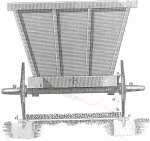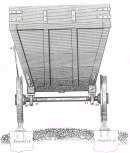
Image 1. Cross section of a plateway [Full image 29.7kb]
A follow up on two items in previous newsletters
Issue 31, the article about Fry's Metals and Tandem works. In that article I mentioned two cast iron rainwater hopper heads; it appears now that the company is leaving Marlowe Way and relocating to a site at Woking. So the hopper heads now have new owners, two company employees - Don Winfield the foreman electrician and David Ellis, one of the solder sales staff. If any ex Fry's employees read this it might be of interest.
The second item concerns an article in issue 36 reference "The Surrey Iron Railway's continuing legacy?".
 |
Image 1. Cross section of a plateway [Full image 29.7kb] |
Many tramways were built using a gauge of 4'2 in. The Wylam railway (George Stephenson was born in a house which stands near the route) was rebuilt from a wooden line to a 5' gauge plateway and about 1830 was rebuilt again as a 5' gauge railway. In 1810 or 1813 George Stephenson was appointed engineer of the Killingworth colliery and in 1821 he was engineer to the Stockton and Darlington Railway. He scrapped the original plans drawn up for a plateway and built the line as an edge railway of 4'8" gauge, the same gauge as the Killingworth colliery line
The additional half-inch was added sometime later in order to reduce friction between the rails and the wheels and its flanges. At the time of railways being built in America the purchase of various steam locomotives from England for example the Stourbridge Lion, built by Foster Rastrick and Co of Stourbridge and The America from Robert Stephenson and Co (George Stephenson's son). So naturally American railways were built to a gauge of 4'8½". In England,
 |
Image 2. Cross section of a railway [Full image 34.8kb] |
It would appear therefore that the railway gauge of 4'8½" had nothing to do with the width of a horse's rump or even the Surrey Iron Railway
If anyone is interested any further there are two interesting books that I know of. One is "Early Railways" by J.P. Snell published by Weidenfeld & Nicholson and I acknowledge my debt to it in compiling this article, and the other is "Railways, the Pioneer Years" by Malcolm Fletcher and John Taylor published by Studio Editions Ltd.
Eric Shaw May 2002
|
|
|
|